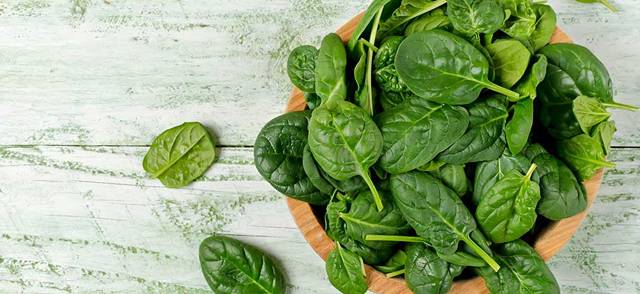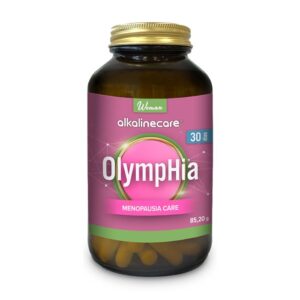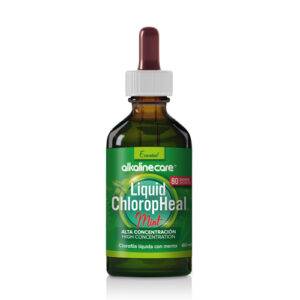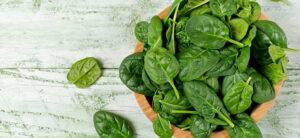Following an alkaline diet will help us maintain an optimal pH level for a healthy body. The goal of this diet isn´t just focused on weight loss, but also on fostering a healthy body and help eliminate acidity. In today’s article we will present the seven most alkaline fruits and vegetables to help prevent and reverse all kinds of illnesses and aliments. The seven most alkaline fruits and vegetables. A selection to prevent and reverse all types of diseases and ailments..
The Seven Most Alkaline Fruits and Vegetables
Spinach
All leafy green vegetables should be consumed abundantly, but spinach stands out as one of the best choices since it is easy to find, easy to use in recipes and salads and is delicious. Baby spinach or fully grown spinach is truly energizing, nutritious and incredibly alkaline. Like all green plants and vegetables, spinach is very rich in chlorophyll, making it a powerful alkalizer and a precursor for red blood cell production.
Spinach is also high in vitamin K, vitamin A, manganese, folic acid, magnesium, iron, vitamin C, vitamin B2, calcium, potassium, vitamin E, and dietary fiber. It is difficult to find a more complete food on Earth, so we strongly encourage you to eat spinach daily, even more than once. Add spinach to your favorite green drink, soup, or smoothie.
Kale
Kale is another leafy green wonder, widely recognized for its benefits in helping lower cholesterol, rich in antioxidants and very detox. Though less popular than spinach, it is increasingly appreciated as a superfood (kale) perhaps because historically it has been prepared in less appealing ways (similar to cabbage). When prepared properly, it is absolutely delicious. If you eat kale two to three times a week you will notice a decrease in dietary and metabolic acidic levels.
Like spinach, kale boasts impressive levels of vitamin K, vitamin A, and vitamin C. With its chlorophyll-rich leaves, kale is an excellent precursor for red blood cells as it help enhance its quality and quantity and improve hemoglobin and hematocrit levels.
What makes kale such a potent alkaline vegetable is its content in glucosinolates that help block acids. The human body transforms these glucosinolates into alkaline compounds, thereby protecting cells from metabolic and dietary acids that can cause illnesses and ailments.
Kale also significantly lowers cholesterol levels as it reduces metabolic and dietary acids, which in turn release cholesterol. Note that steamed kale is more effective than raw kale for reducing metabolic and dietary acids, thereby helping to manage cholesterol levels.
Cucumber
The marvel of cucumber is that it is made up to 95% of water. This is phenomenal and unmatched by any other fruit. It is the “grandfather” of alkaline water content. This makes it a highly hydrating vegetable, which also contains impressive amounts of antioxidants, including the crucial lignans. These highly beneficial polyphenols are most commonly associated with cruciferous vegetables but are gaining attention for their presence in other vegetables like cucumber.
Cucumbers contain an adequate amount of lariciresinol, pinoresinol, and secoisolariciresinol, three lignans that have been extensively studied for their connection in reducing the risk of cardiovascular diseases. The best part about cucumber is that it provides an excellent base for almost all alkaline soups, smoothies or juices, offering a highly alkaline and nutritious base with a great taste.
Nutritionally, cucumbers offer significant amounts of vitamin K and vitamin C, with smaller amounts of vitamin A and B vitamins. Additionally, cucumbers contain the following alkaline minerals: calcium, phosphorus, potassium, magnesium, selenium, copper, manganese, iron, and zinc.
Broccoli
Broccoli is something you simply cannot skip. If you truly want to be healthy, feel energetic and vital you must eat broccoli on a daily basis or at least four times per week. It has been shown repeatedly to be incredibly powerful at inhibiting the acids that cause discomfort.
Broccoli supports the digestive and the cardiovascular system and the body’s detoxification process. It also promotes healthy skin, metabolism and immune system, while providing anti-inflammatory properties and a range of chelating antioxidants.
Whether steamed or raw, broccoli is an incredibly alkaline and alkalizing superfood, as well as highly nutritious. Please, eat plenty of broccoli. Add it to your salads, juices, smoothies, creams and soups; steam it alongside other vegetables, or even roast it. You can also eat raw broccoli.
Avocado
Add avocados to your salads, smoothies or soups. You can eat between seven to ten avocados per week. While it is true that avocados have a high fat content (85% of their calories come from fat) these are highly beneficial fats. These healthy fats will not cause weight gain; quite the opposite. Thanks to its high oleic acid content (rich in omega-9 fat similar to olive oil), avocado helps lower total cholesterol levels and increases high-density lipoproteins (HDL), while reducing low-density lipoproteins (LDL) which have a chelating effect on metabolic acids.
Oleic fatty acids also slow the development of cardiovascular diseases and promote the production of acid-chelating antioxidants. These beneficial omega vegetable oils also help boost metabolism, thus aiding in weight loss rather than weight gain.
Moreover, avocados contain a wide range of other nutrients that have powerful anti-inflammatory effects, promote heart and cardiovascular health, and naturally lower blood sugar levels. Avocados are packed with essential antioxidants like alpha-carotene, beta-carotene, lutein, selenium, and more, making them a powerful nutrient-dense alkaline superfood. The most powerful antacid is lutein, known to prevent prostate issues.
Celery
Celery, like cucumber, is another of my favorites because it is another alkaline vegetable with a high water content, making it a frequent base for juices and soups. One of celery’s great benefits is its high vitamin C content, alongside lesser-known nutrients like phthalides, which have been shown to lower cholesterol, and coumarins, which can inhibit some disease processes.
Foods rich in vitamin C help address common and problematic health issues, support the immune system, and assist with inflammatory conditions like arthritis, osteoporosis, and asthma. Vitamin C also significantly benefits cardiovascular health.
If you’re aiming for weight loss, you’ll be glad to know that this basic food contains plenty of potassium and sodium, making it diuretic. In short, it helps the body eliminate excess acidic fluids. Thanks to its high sodium content, celery helps maintain the body’s alkaline design. The sodium levels in celery also help transport energy ions in the form of electrons, which is crucial for the production of sodium bicarbonate.
Bell Peppers (red, Green and yellow)
Bell peppers are super potent antioxidants and have long been one of our favorites for being crunchy and refreshingly delicious. You can use them raw in almost any dish, steamed or lightly roasted, and they always come out great. Bell peppers are highly beneficial for your health due to their carotenoid content, which has been extensively studied and is highly regarded in the health field, as bell peppers contain about thirty different types of these carotenoids, all belonging to the same family of nutrients.
The only comparable food is tomato. Various studies have shown that the risk of cardiovascular disease, type II diabetes, macular degeneration, inflammation, and more decreases when consuming bell peppers.
Along with these more complex or lesser-known antioxidants, bell peppers are among the richest foods in common antioxidants like vitamin C, vitamin A, and vitamin E. In fact, bell peppers contain twice as much vitamin C as oranges without the acidic sugar contained in them. Here are some of the antioxidants found in bell peppers: flavonoids, luteolin, quercetin, hesperidin, carotenoids, alpha-carotene, beta-carotene, cryptoxanthin, lutein, zeaxanthin, ferulic acid, hydroxycinnamic acid, and cinnamic acid.
I hope these seven alkaline fruits and vegetables become a regular part of your diet from now on! Just enjoy them!













